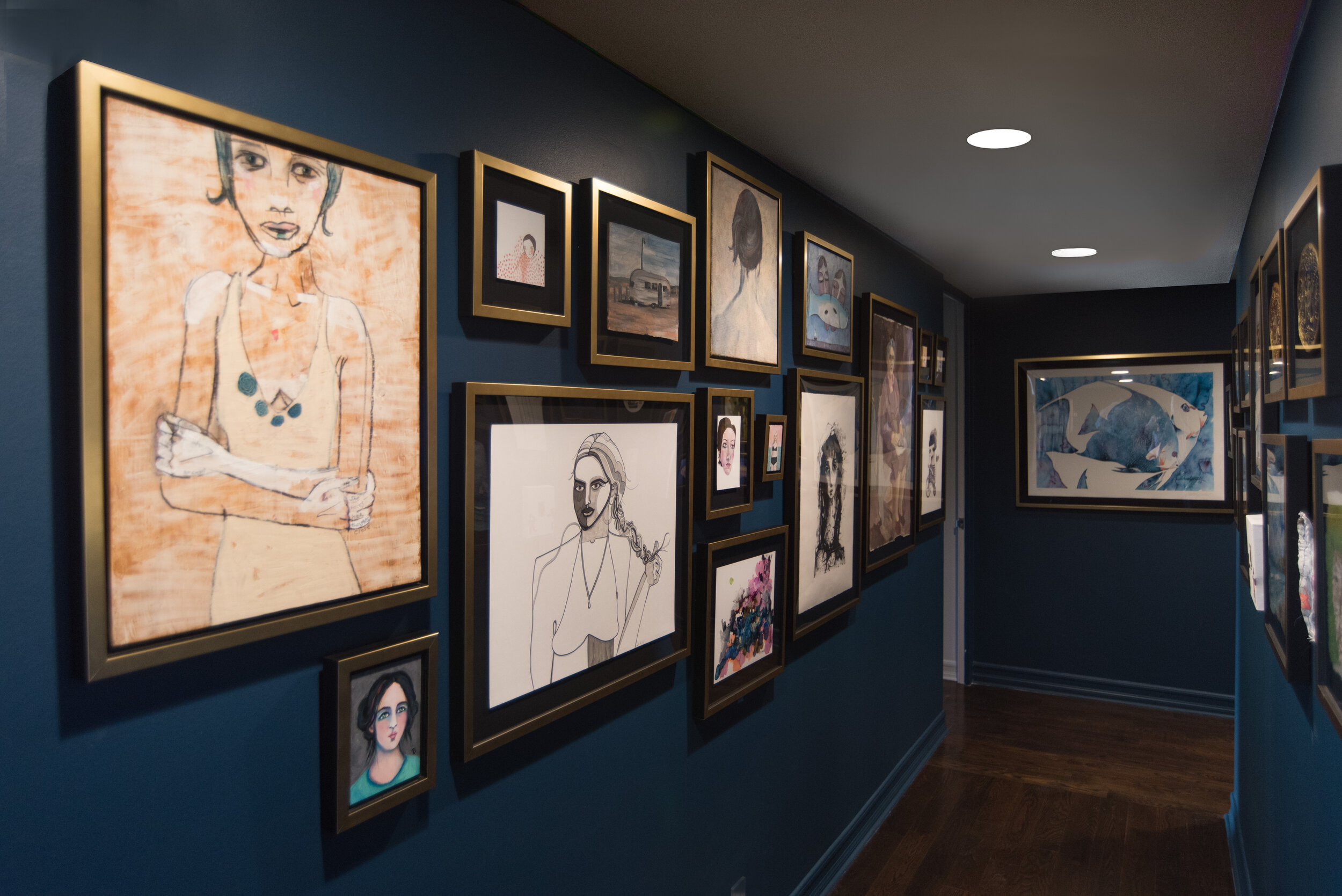How to Host an Art Show at Home
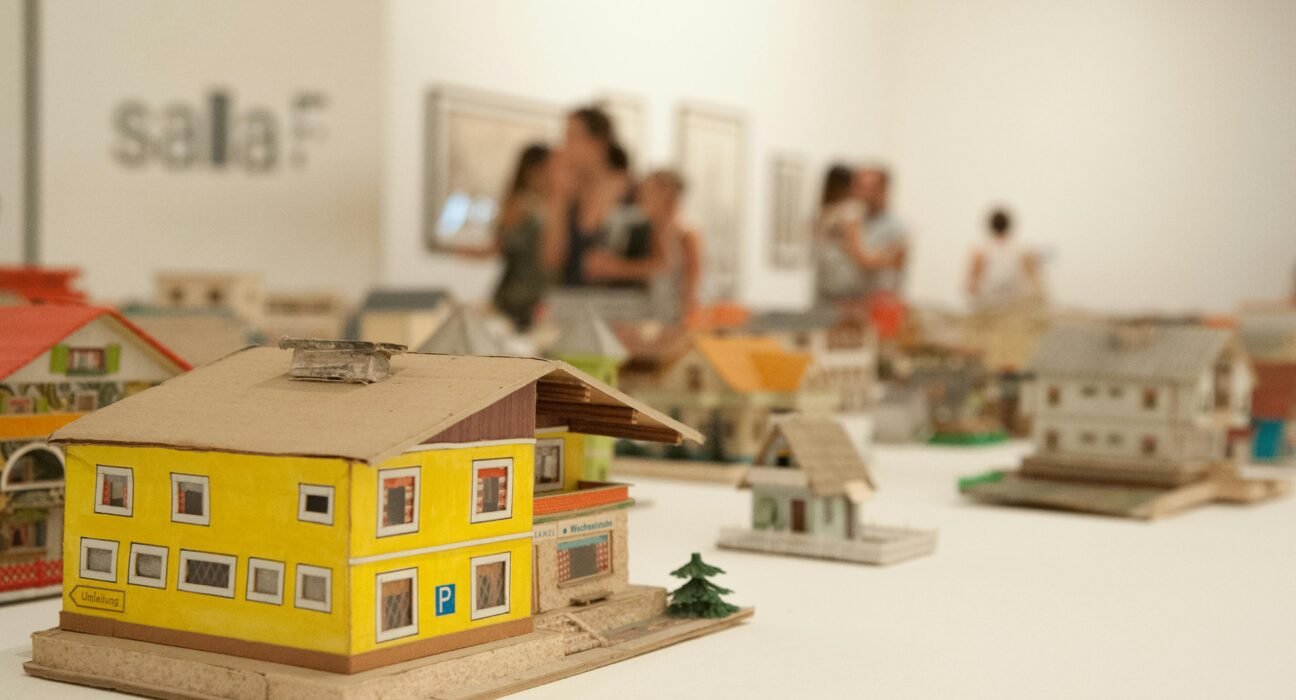
How to Host an Art Show at Home
Hosting an art show in your home can be an exciting and rewarding experience, especially for middle-aged art enthusiasts looking to showcase their own work or support local artists. Whether you’re an artist yourself or simply passionate about art, organizing a home exhibition is a fantastic way to bring creativity and culture into your living space. This guide will walk you through the process of hosting a successful art show at home, tailored for individuals aged 40-55 in the United States.
Planning Your Home Art Show
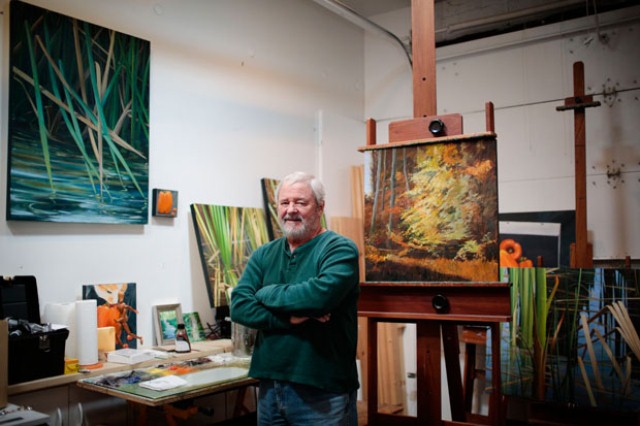
Define Your Purpose
Before diving into the logistics, it’s crucial to clarify your goals for the art show. Are you looking to sell artwork, promote local artists, or simply share your passion with friends and family? Having a clear purpose will guide your decisions throughout the planning process .1.

Choose a Theme
Selecting a theme for your art show can create cohesion and make the event more memorable. Consider themes that resonate with your age group, such as:
-
Midlife Renaissance: Celebrating new beginnings and creative pursuits
-
Nostalgic Narratives: Art inspired by shared generational experiences
-
Nature’s Palette: Showcasing works that reflect the beauty of the natural world
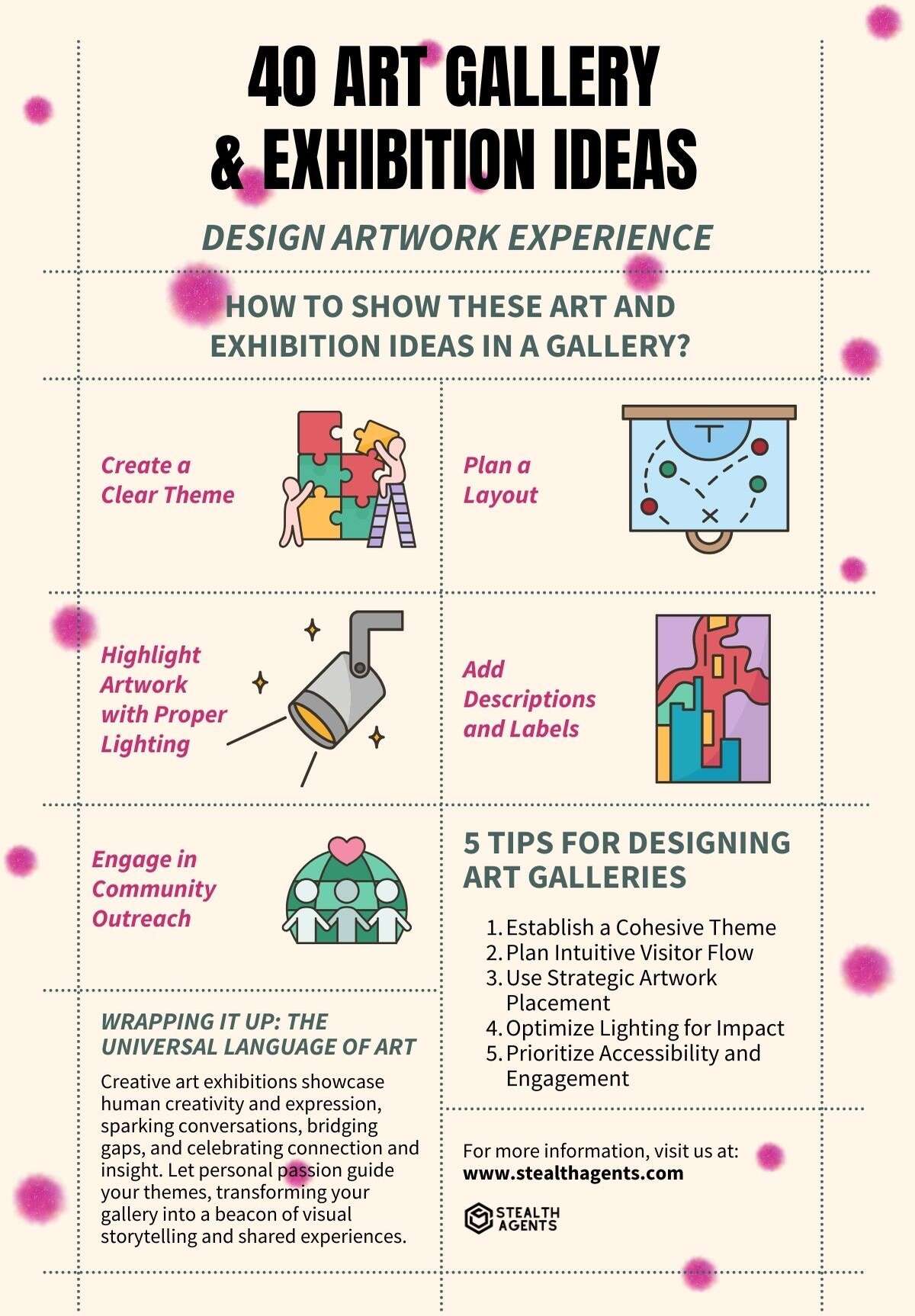
Set a Date and Time
Choose a date that works well for your target audience. Weekends are often ideal, as they allow for more flexibility. Consider hosting an evening event or a weekend afternoon gathering to accommodate various schedules .1.
Create a Guest List
Decide on the size of your event based on your home’s capacity and your comfort level. A more intimate gathering of 20-30 guests can create a cozy atmosphere, while a larger event of 50-75 people can generate more buzz. Be sure to invite a mix of art enthusiasts, potential buyers, and supportive friends and family .2.

Preparing Your Space

Declutter and Organize
Start by decluttering your home to create a clean, gallery-like atmosphere. Remove personal items and rearrange furniture to optimize wall space and traffic flow .3.
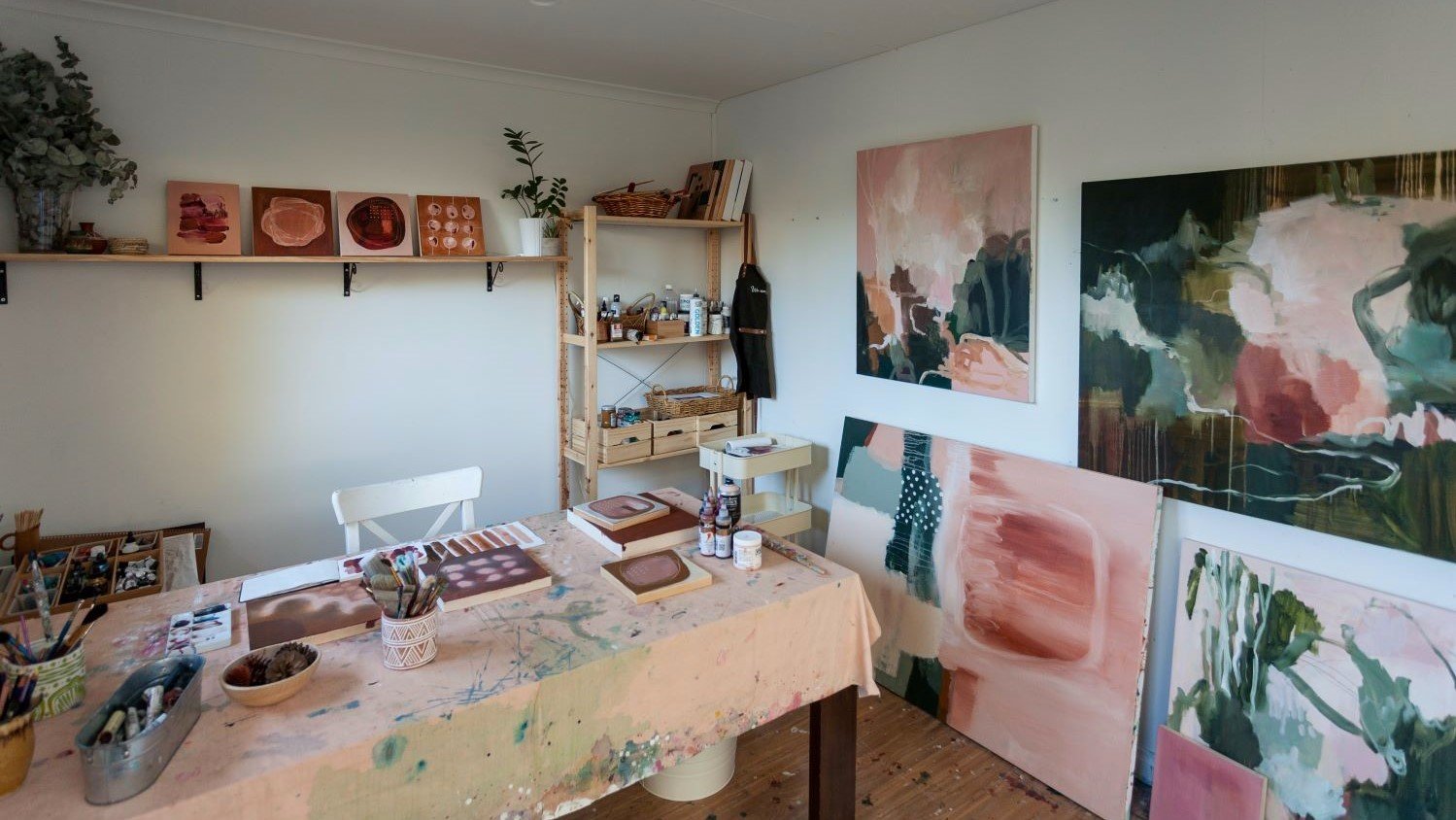
Lighting Matters
Proper lighting is crucial for showcasing artwork. Use a combination of ambient and directed lighting to highlight each piece. Consider renting or purchasing additional lighting fixtures if needed .3.
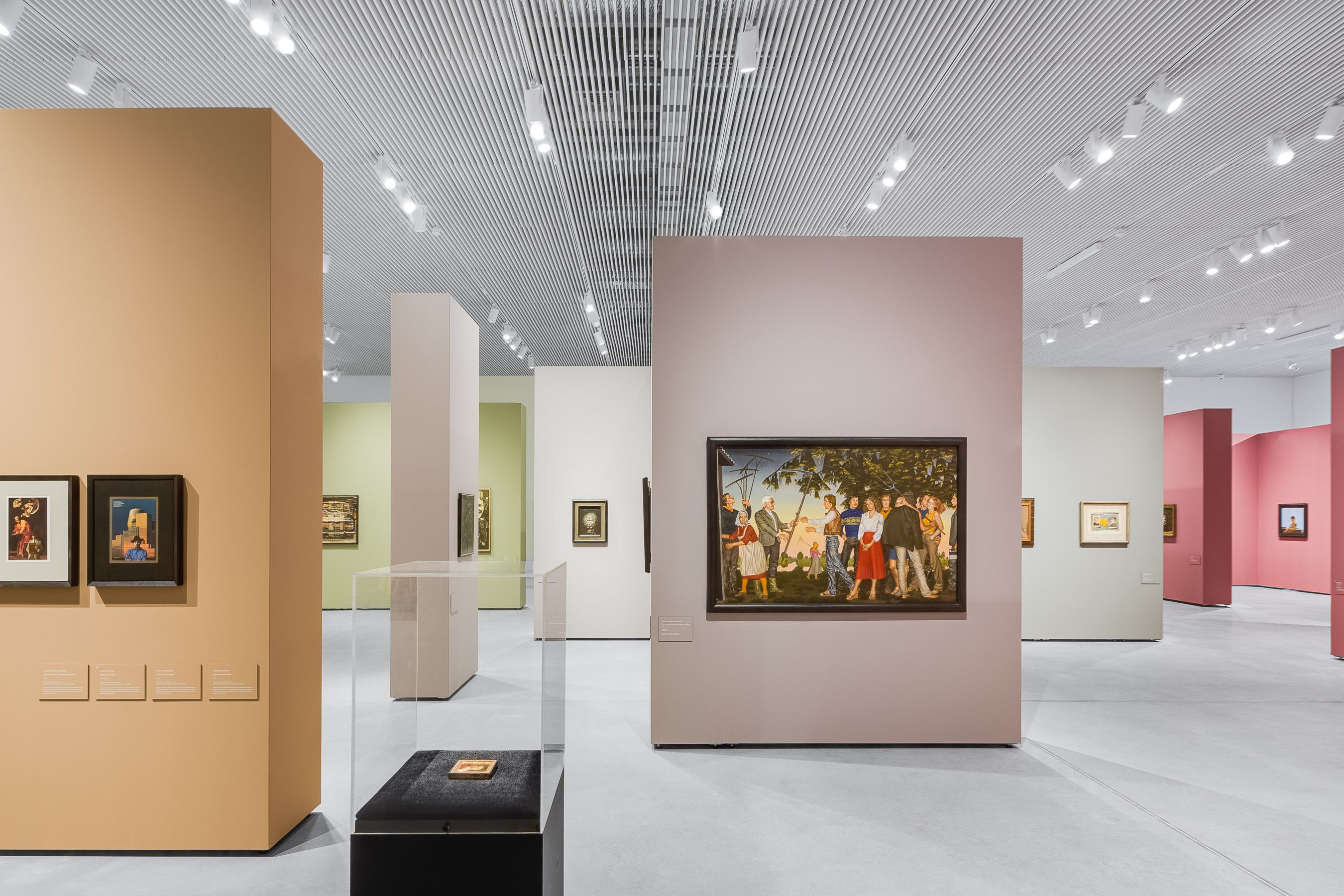
Create a Layout
Plan the placement of artwork carefully. Group pieces by theme, artist, or style to create a cohesive flow. Use a centerline layout, positioning each piece 54–62 inches above the ground for optimal viewing .7.

Set Up a Welcome Area
Create a welcoming entrance that sets the tone for your event. Consider including:
-
A guest book for attendees to sign
-
Name tags for a more personal touch
-
A brief introduction to the show’s theme or featured artists
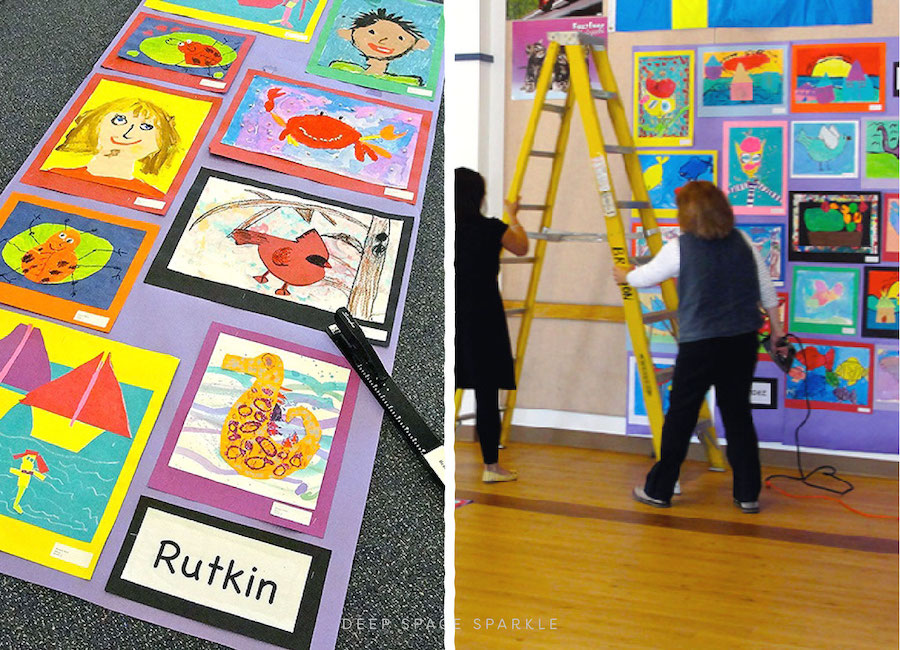
Curating the Artwork

Selecting Pieces
If you’re showcasing your own work, choose pieces that best represent your artistic journey and current style. For group shows, carefully curate submissions to ensure a diverse yet cohesive collection .2.
Pricing and Labels
If you plan to sell artwork, set clear and fair prices. Create professional labels for each piece, including:
-
Artist’s name
-
Title of the work
-
Medium
-
Price (if applicable)
-
A brief description or artist statement .7

Consider a Digital Catalog
Create a digital catalog of the artwork to share with guests. This can include high-quality images, artist bios, and additional information about each piece. You can easily share this via email or a dedicated website .4.

Promoting Your Home Art Show

Leverage Social Media
Use platforms like Facebook, Instagram, and LinkedIn to promote your event. Create eye-catching posts featuring sneak peeks of the artwork and behind-the-scenes preparations .6.
Email Invitations
Send personalized email invitations to your guest list. Include all essential details such as date, time, address, and any special instructions (e.g., parking information) .1.

Collaborate with Local Artists
If you’re featuring multiple artists, encourage them to promote the event to their networks. This can help expand your reach and bring in a diverse audience .6.

Press Releases and Local Media
Consider sending press releases to local newspapers, magazines, and online publications. Many communities have dedicated arts sections that may be interested in covering your unique home art show .6.

Creating an Engaging Experience

Opening Night Reception
Plan a memorable opening night to kick off your art show. Consider these elements:
-
Light refreshments and beverages (consider non-alcoholic options as well)
-
Background music that complements the artwork
-
A brief welcome speech or artist talk to engage guests .2
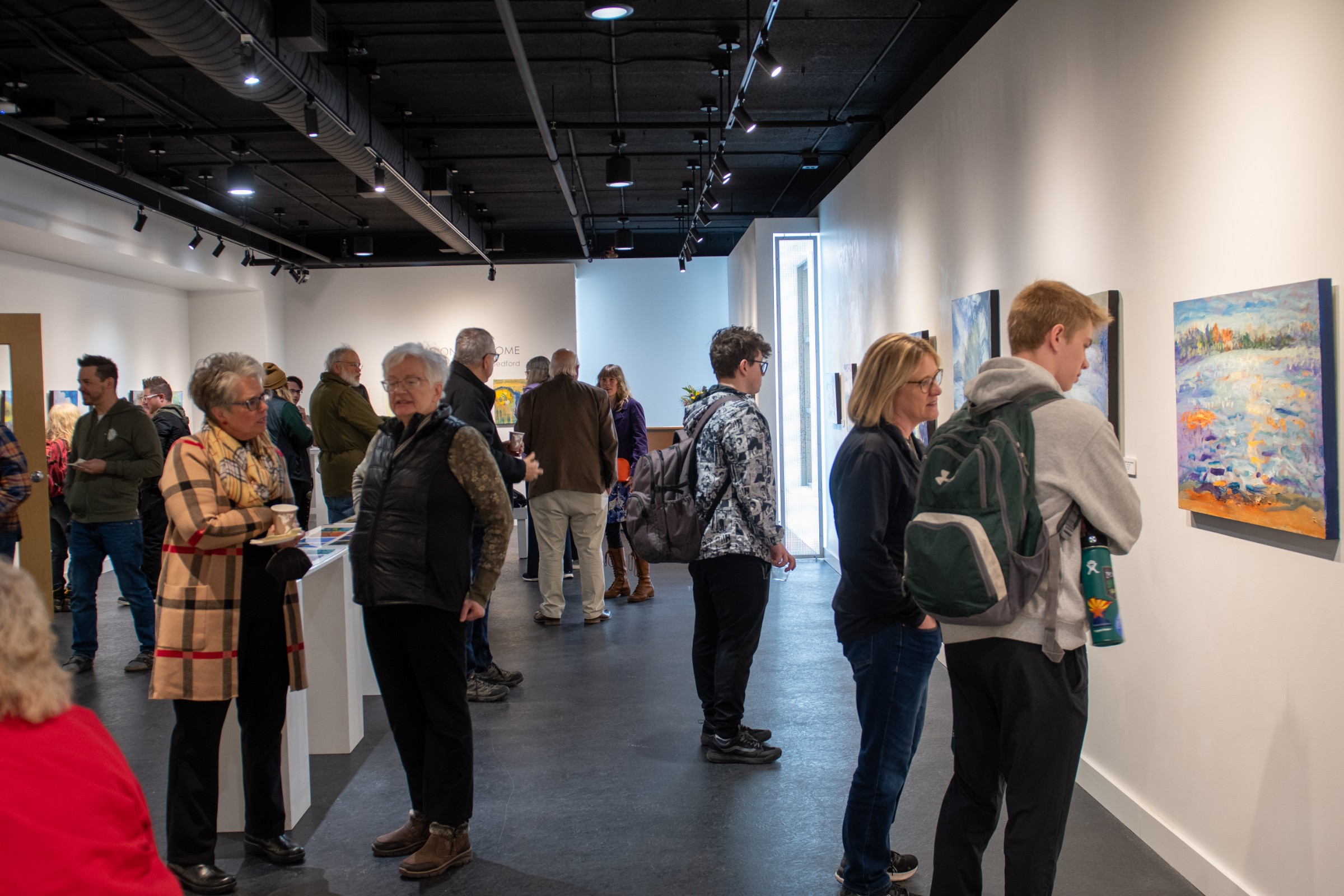
Interactive Elements
Incorporate interactive elements to keep guests engaged:
-
Live art demonstrations
-
A “meet the artist” corner for Q&A sessions
-
A creative activity station where guests can make their own mini-artwork

Provide Context
Offer printed or digital guides that provide context for the artwork. This can include artist statements, the inspiration behind specific pieces, or the story of how the collection came together .4.
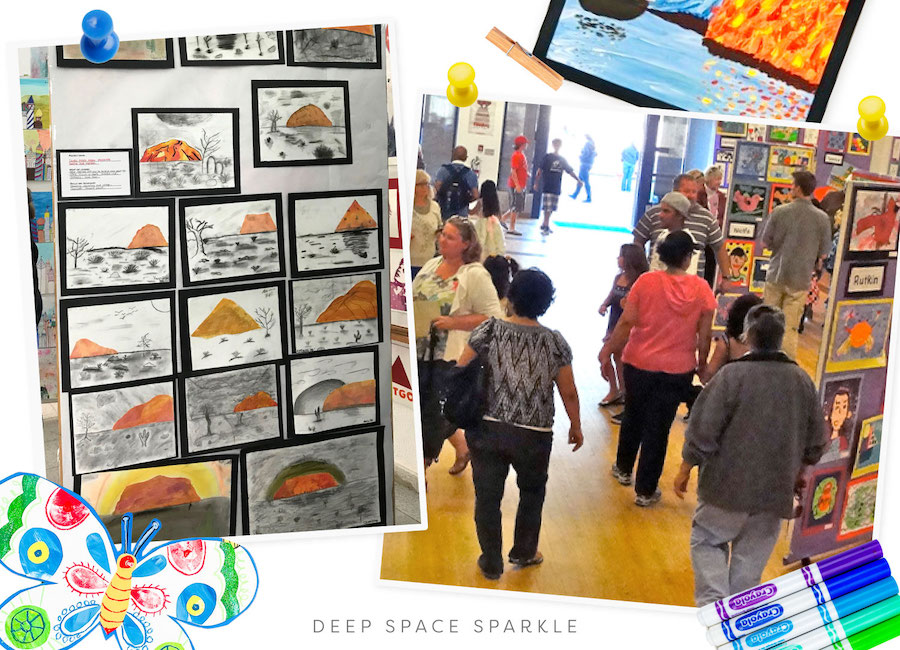
Managing Sales and Transactions

Set Clear Policies
If you’re selling artwork, establish clear policies for purchases, including payment methods, deposits, and pickup or delivery options .7.

Prepare for Transactions
Have a designated area for handling sales, equipped with:
-
A point-of-sale system or credit card reader
-
Receipt books
-
Packing materials for sold items
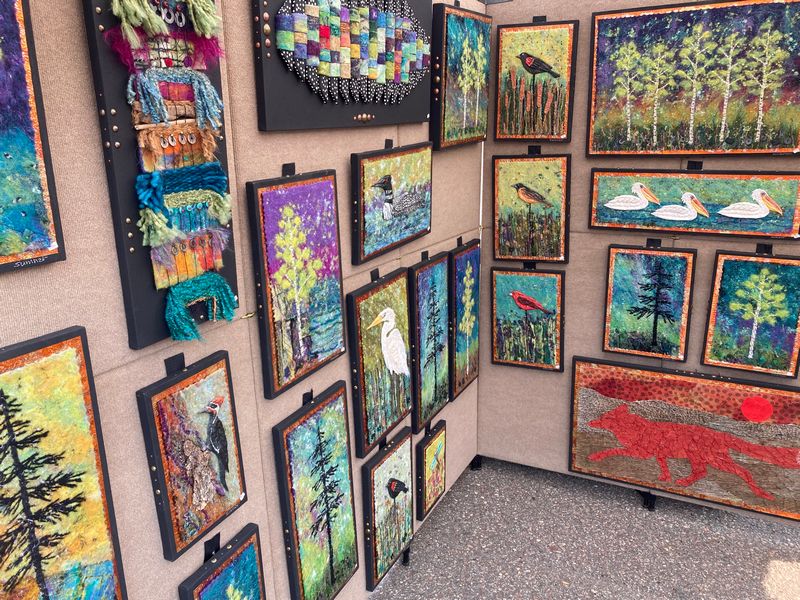
Offer Payment Plans
Consider offering payment plans for higher-priced pieces to make art more accessible to potential buyers .12.

Post-Show Follow-Up

Thank Your Guests
Send personalized thank-you notes to attendees, especially those who made purchases or showed strong interest in the artwork .12.

Share Highlights
Create a post-event recap to share on social media and with your email list. Include photos from the event, highlights of sold pieces, and any memorable moments .







